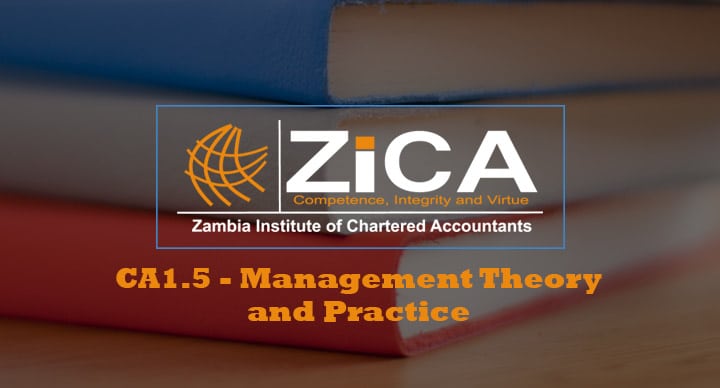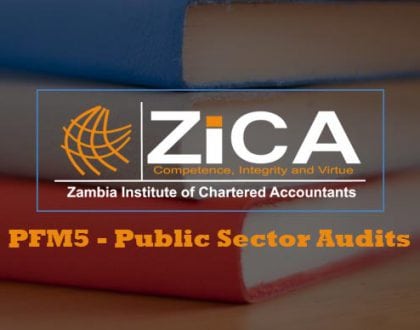CA1.5 – Management Theory and Practice
No access plans exist.

Course Features
Course Details
CA1.5-Management Theory and Practice
On completion of this module, candidates will reach a competency sufficient to be able to:- Describe the structure and purpose of organisations
- Describe the business environment and the role and activities that management determine for the organisation within that environment
- Explain the roles of governance and ethics in relation to the management of organisations
- Explain the role of managers and theories of management in both the public and private sector
| Syllabus topics | Weighting (%) | LO |
| Structure and purpose of organisations | 15 | 1, 2 and 3 |
| The business environment | 20 | 4, 5, 6 ,7 and 8 |
| Governance and ethics | 20 | 9 |
| The role of managers in the public and private sector | 45 | 10, 11, 12, 13 and 14 |
Learning outcomes
- LO1: Identify the objectives that managers set for organisations
- LO2: Describe the benefits of the structure of different types of organisations
- LO3: Identify the factors that give rise to managerial choice of organisation type and structure
- LO4: Describe the strategic environment that business operate within
- LO5: Describe the business planning process that support management decisions
- LO6: Explain the managerial control relationship between business plans and activities
- LO7: Describe key organisational behaviours
- LO8: Explain the basic elements of business analysis
- LO9: Explain the role of governance and ethics within organisations and related managerial responsibilities
- LO10: Explain the role of the manager and the principles of management
- LO11: Outline leadership theories and styles
- LO12: Specify how management can use motivation
- LO13: Explain the different types of organisational change
- LO14: Outline how management can achieve change
- Describe the structure and purpose of organisations: LO1, 2, 3
- Describe the objectives for profit organisations, including:
- Limited companies
- Sole traders
- Partnerships
- Alliances
- Describe the key financial and non-financial objectives for profit and not for profit organisations, including:
- Government
- NGOs
- Identify and outline the role and impact of stakeholders
- Describe the benefits and limitations of organisational choice and form, including:
- Centralisation
- Decentralisation
- Matrix and mixed structures
- Networks
- Virtual arrangements
- Describe the objectives for profit organisations, including:
- Analyse the business environment and the role and activities that management determine for the organisation within that environment
- Describe the environment that business operate within, including:
- Globalisation
- International business
- Macro-economic environment
- National regulatory environment
- Micro-economic environment
- Markets and industries
- Demonstrate how management position the organisation to meet its objectives, including specification of the business planning processes in terms of:
- Basics and relationships of strategic vision, mission, values and objectives
- The relationship between strategic , business and operational plans
- Basics of strategic plan development
- Explain the relationship between business plans and activities, including:
- The relationships between business functions, activities and processes and their support for achieving business objectives
- The relationship between entity and functional strategies
- State and describe key organisational behaviours
- Formal and informal organisation
- Culture
- Leadership and management
- Individual and group behaviour in organisations
- Team formation, development and management
- Motivation of management and employees
- Describe the environment that business operate within, including:
- Explain the roles of governance and ethics in relation to the management of organisations
- Outline governance structures and key governance roles
- Describe the principles of corporate governance
- Outline key ethical principles
- Explain the impact that good governance and good ethical frameworks have on organisational behaviour
- Demonstrate an understanding of the role of managers and theories of management in both the public and private sector
- Explain the role of the manager and the principles of management, outlining:
- Key management skills
- Key theories of management
- Outline leadership theories and styles, including:
- The difference between management and leadership
- Theories of leadership
- The nature and uses of different styles of leadership
- The uses, benefits and obstacles to delegation
- How leadership can be adapted to organisational purpose and form
- Specify how management can use motivation, including:
- Theories of motivation
- Nature and process of motivation
- Personal achievement and career development
- Role of job design in motivation
- Motivation in the public sector and other non-profit organisations
- Ethical issues in relation to motivation
- Explain the different types of organisational change
- Outline how management can achieve change, including:
- Strategic change
- Impact of change triggers on the organisation
- Techniques of managing change
- Role of leadership in managing change
- Techniques for overcoming resistance
- Relationship between change process and organisational culture
- Change management in the public sector
- Ethical issues in relation to change management
- Explain the role of the manager and the principles of management, outlining:
This course does not have any sections.





